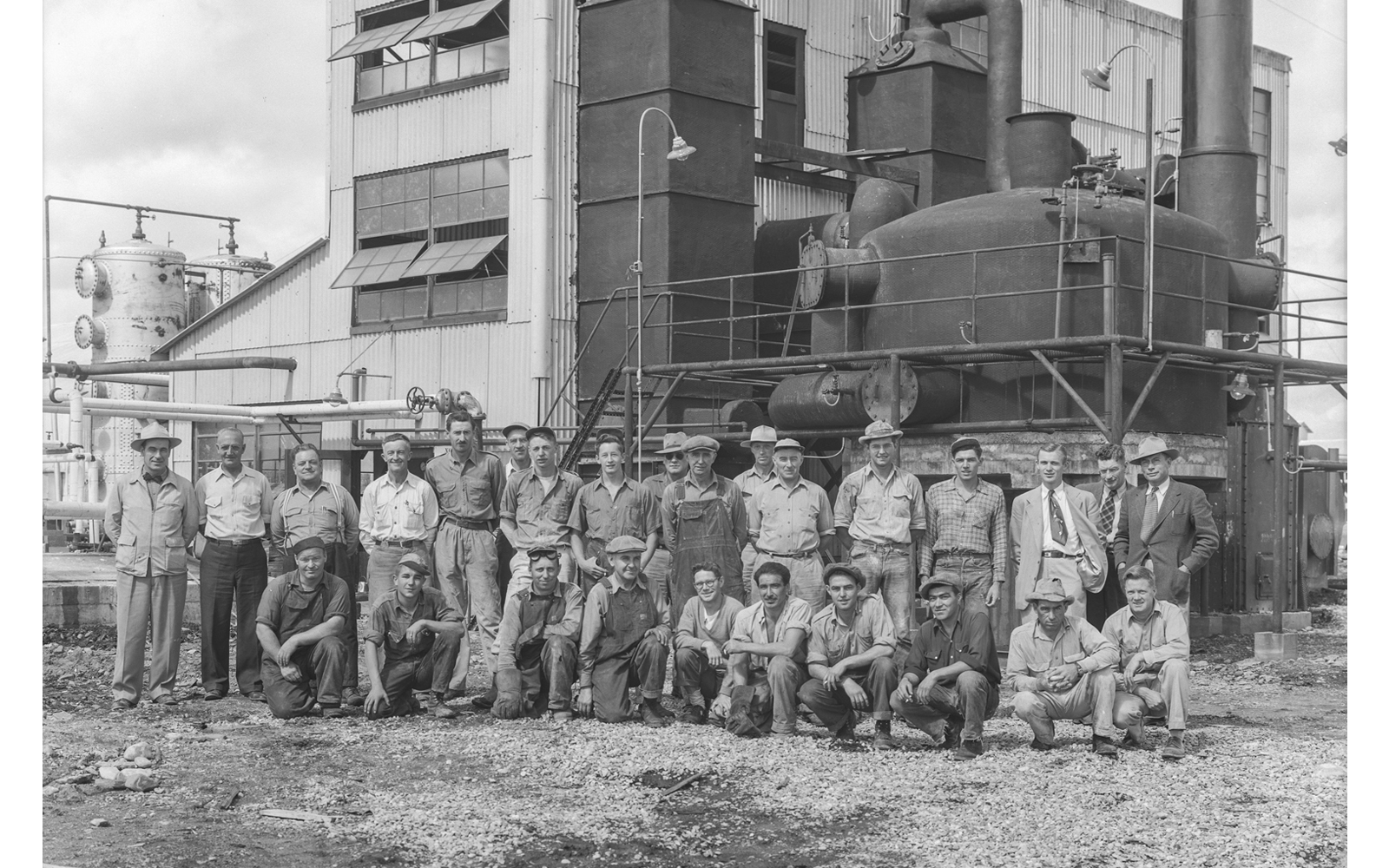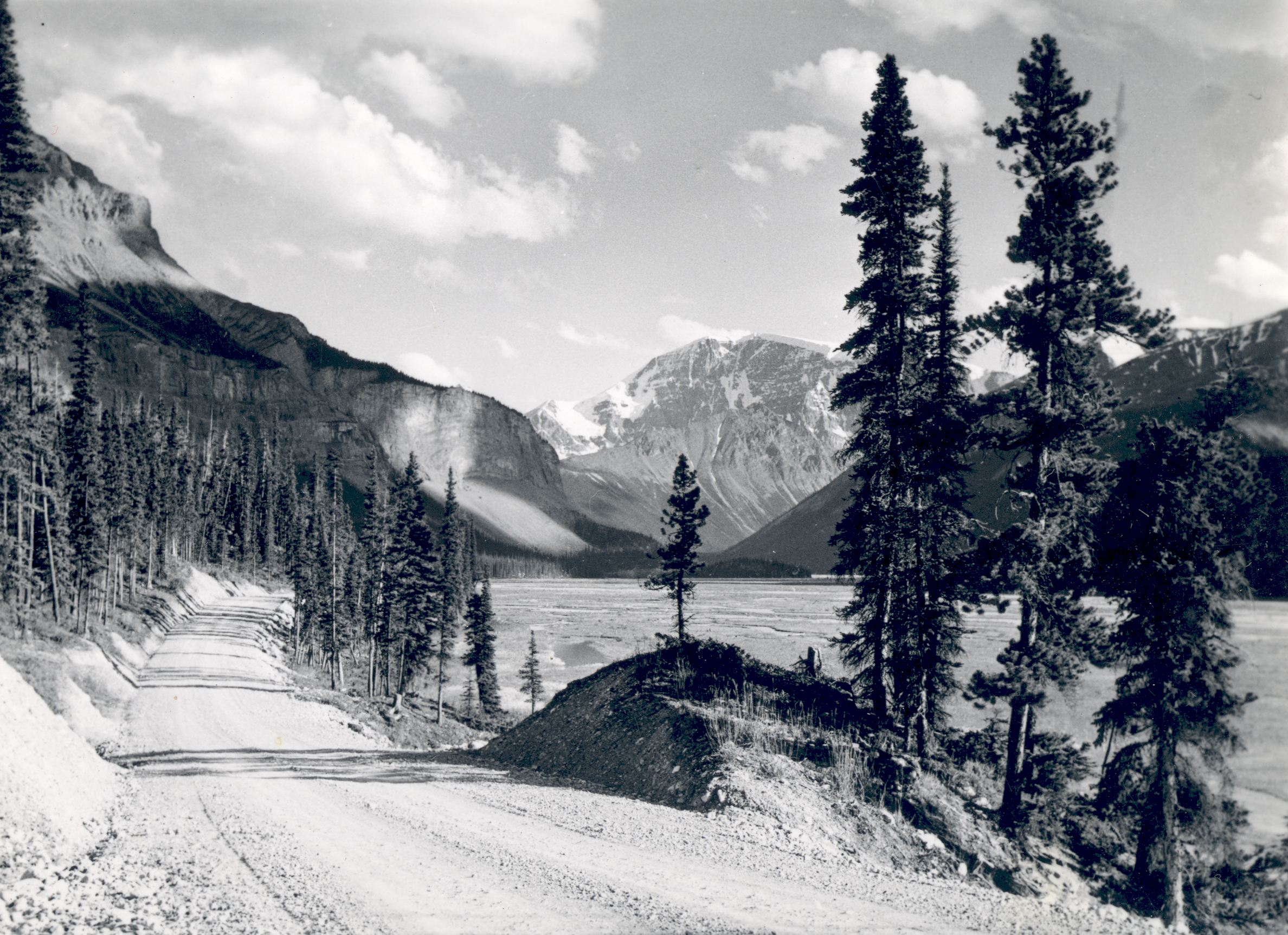Glenbow Archives NA-781-2
Ribbons of Steel Open the North
Railways shaped the country in the late 1800s, but construction didn’t end with the famous Last Spike, ceremoniously pounded into the ground at a site between Sicamous and Revelstoke. Networks of rail continued being built, many of them crisscrossing Alberta.
One was called the Great Waterways Railway, joining Edmonton to Waterways (now part of Fort McMurray in the Regional Municipality of Wood Buffalo), via Lac La Biche.
Completed in 1925, the line took 12 years to build, slowed by financing and other hurdles. In the end, the line helped open Alberta’s north to settlers and boosted natural resource development.
Railways remain a vital transportation link, getting Alberta goods to market and bringing goods here from around the world.
The Alberta and Great Waterways Railway station in Lac La Biche, 1920.
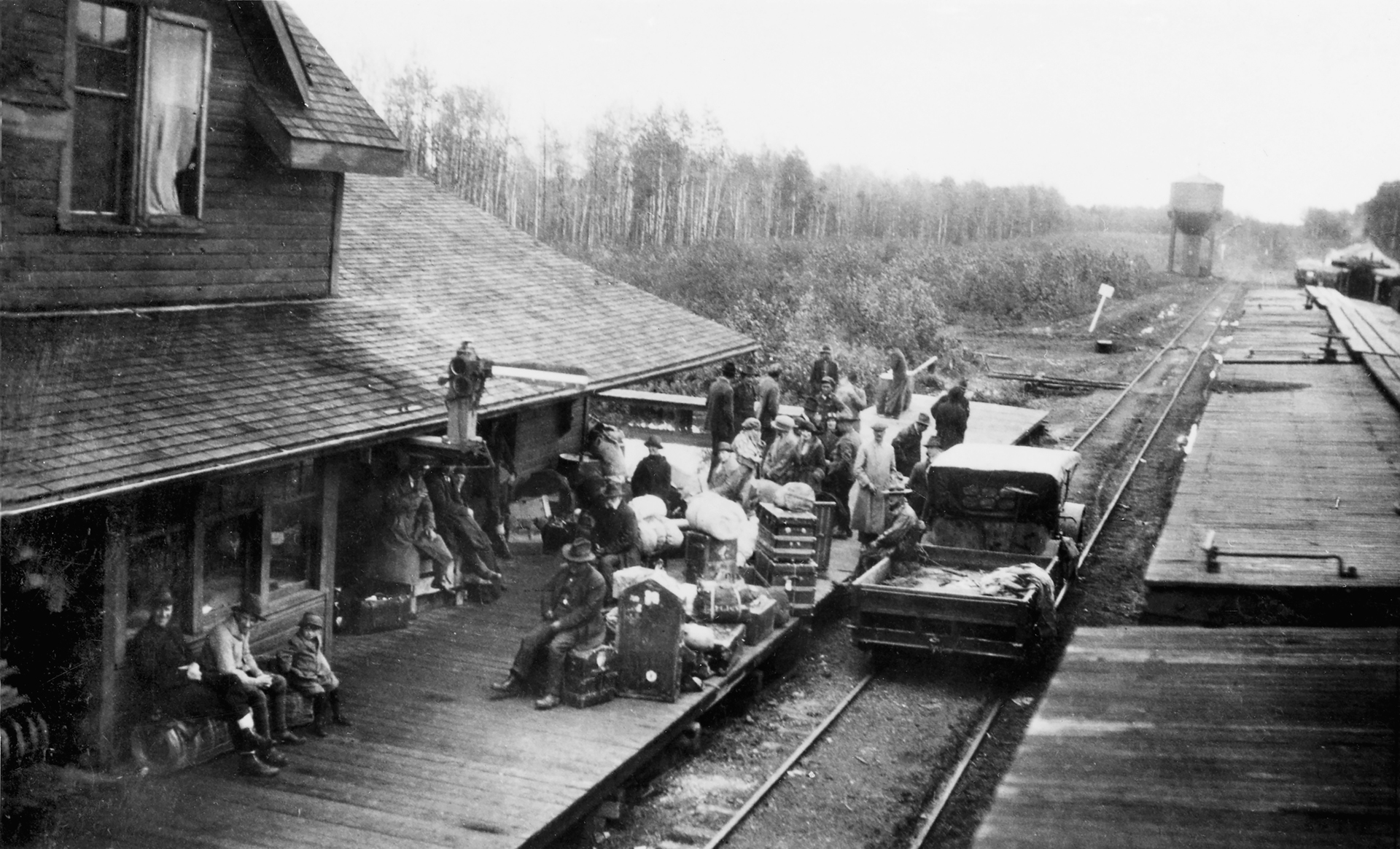
Glenbow Archives NA-1452-13
In 1925, new railway tracks were being laid in Lethbridge. This photo shows a view of one track, at the north approach and 101 Street subway, being prepared for asphalt surface and side paving.
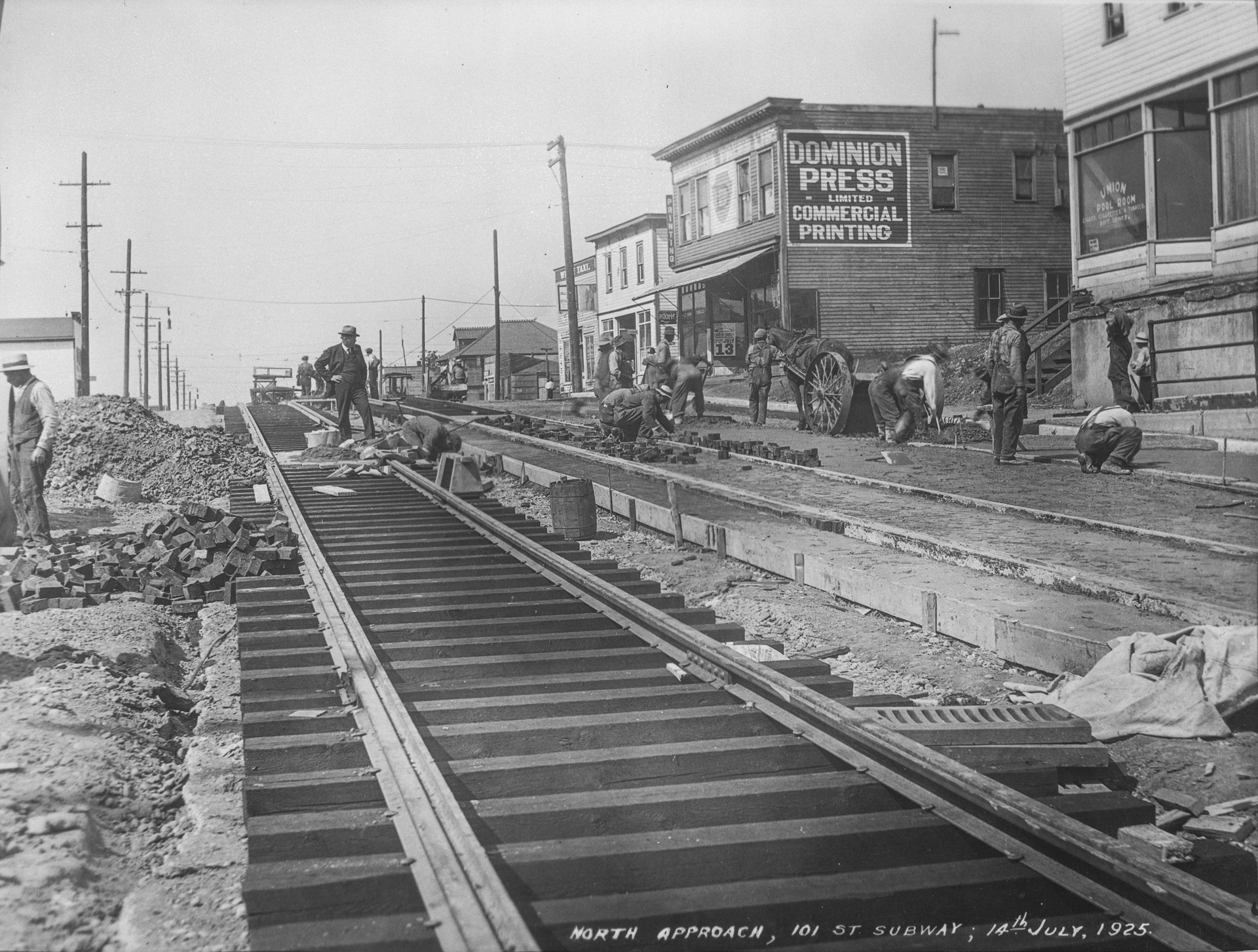
Provincial Archives of Alberta A2374
Locomotive number 7334 of the Alberta and Great Waterways Railway. The scene, from spring 1921, is likely somewhere between Lac La Biche and Waterways (now part of Fort McMurray).
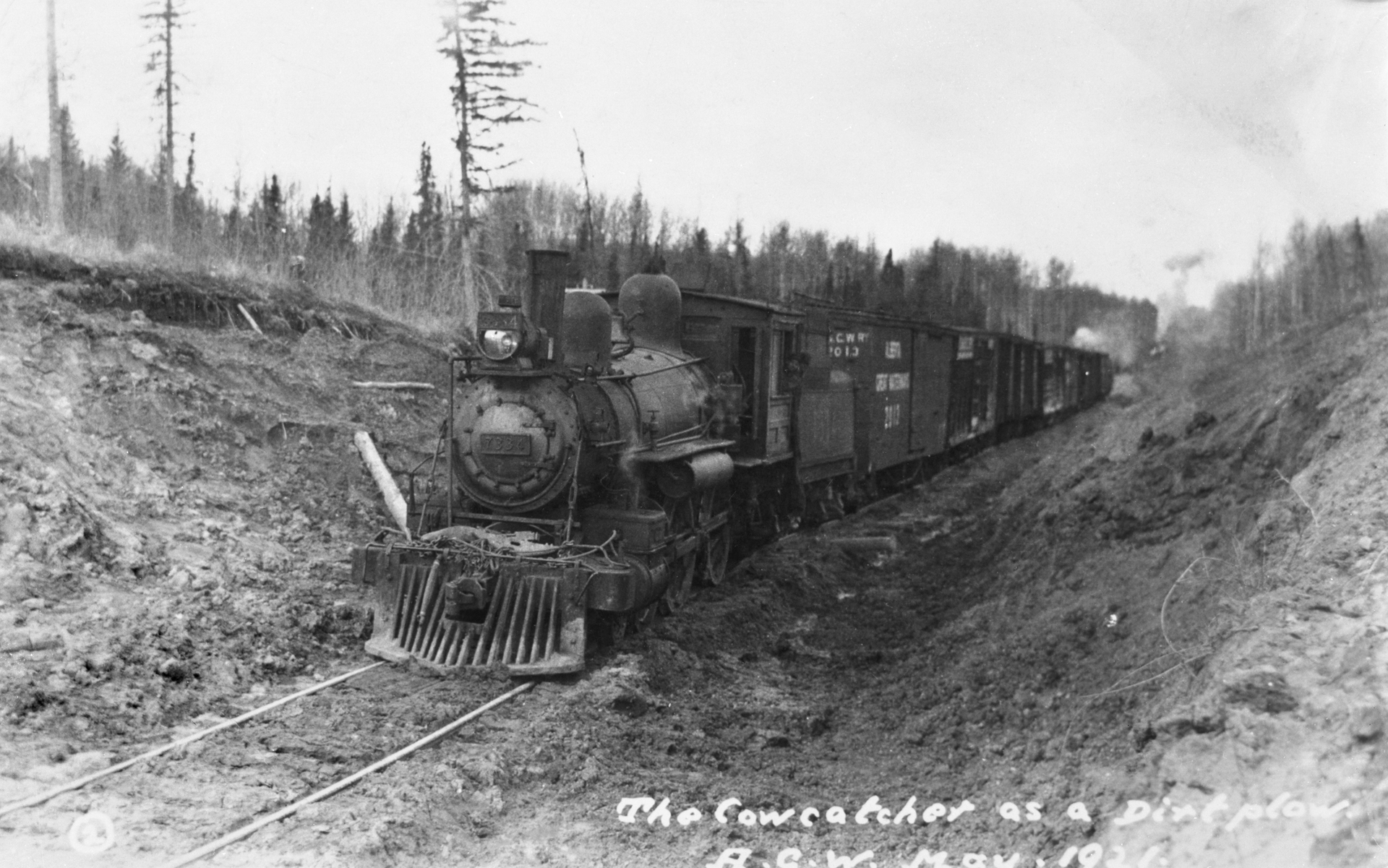
Glenbow Archives 5745-318
The engineers who designed the Alberta and Great Waterways Railway had to overcome many hurdles, including building on unstable muskeg.
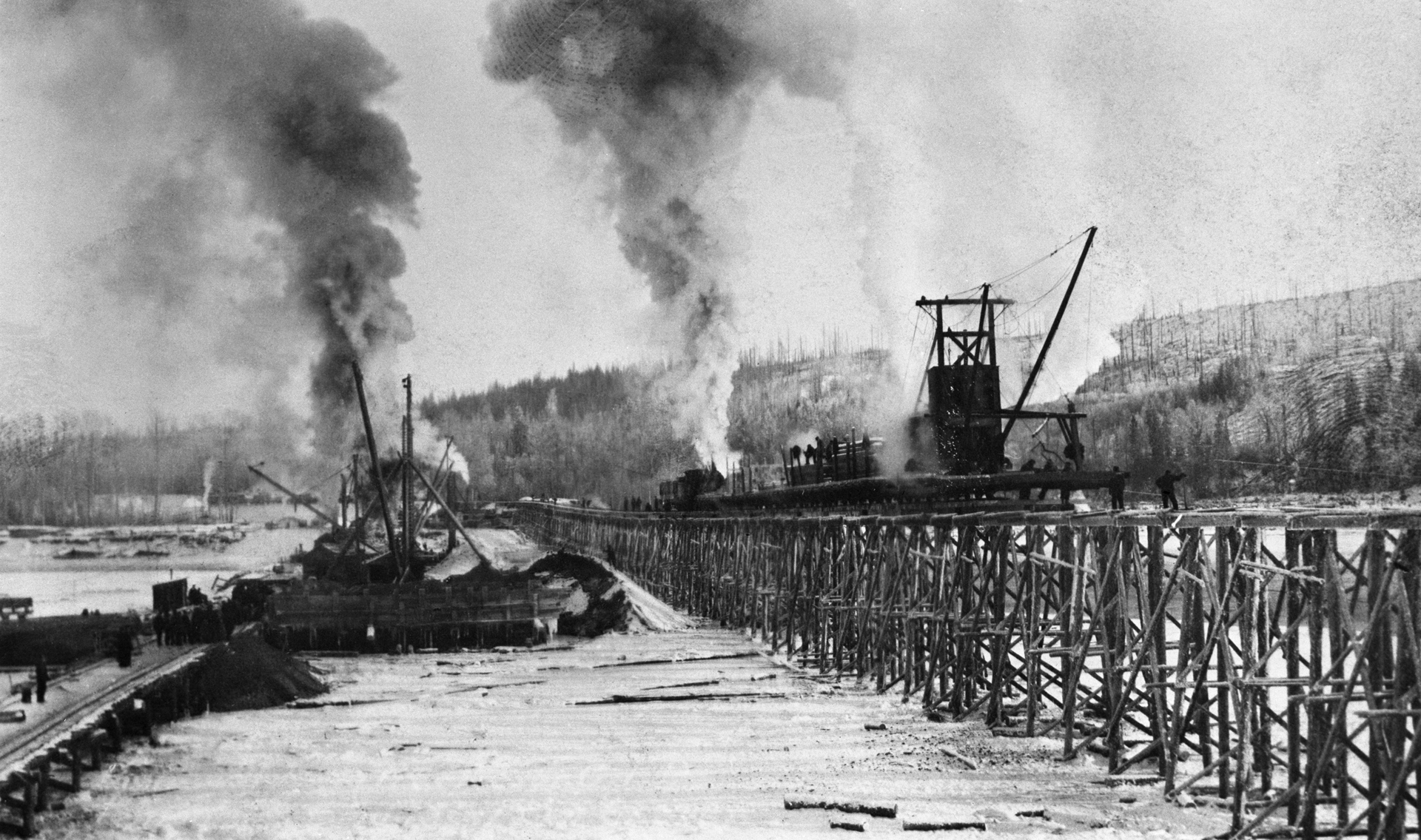
Glenbow Archives NA-781-2
